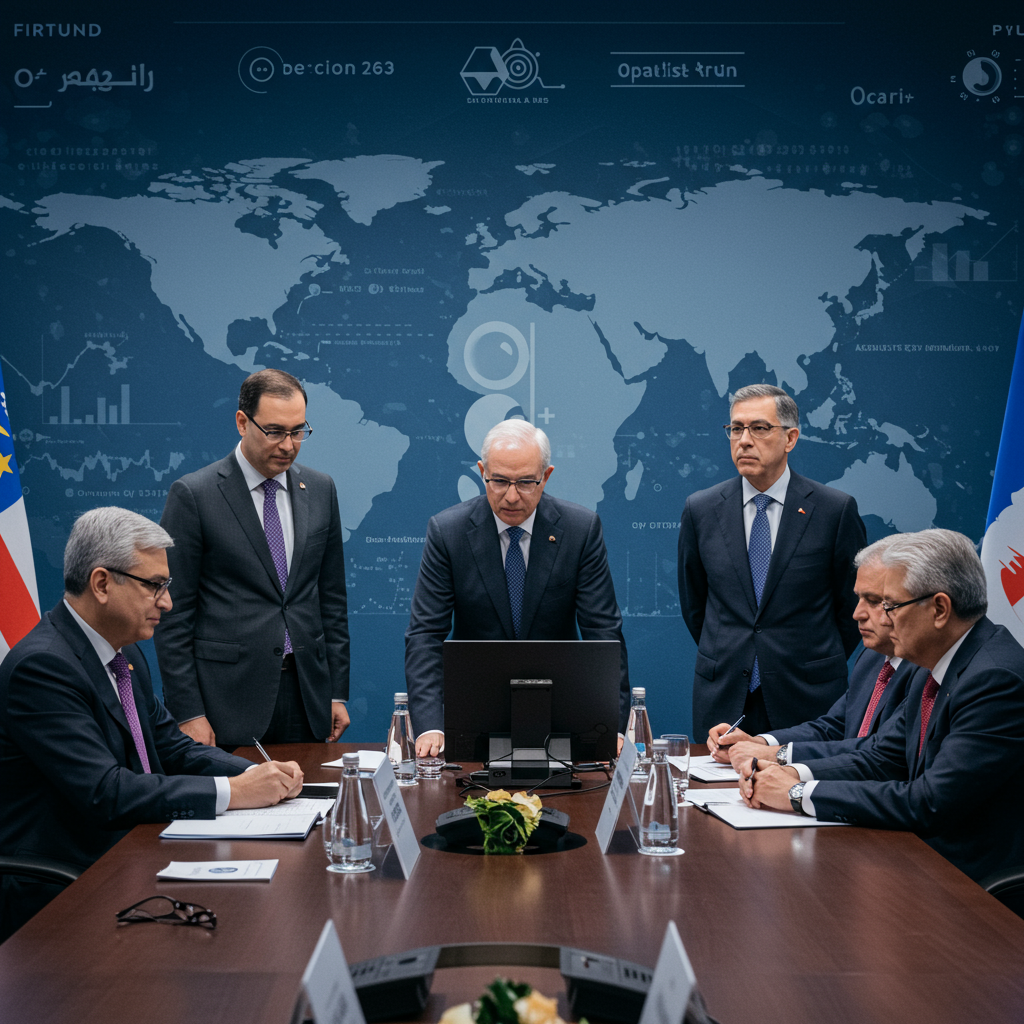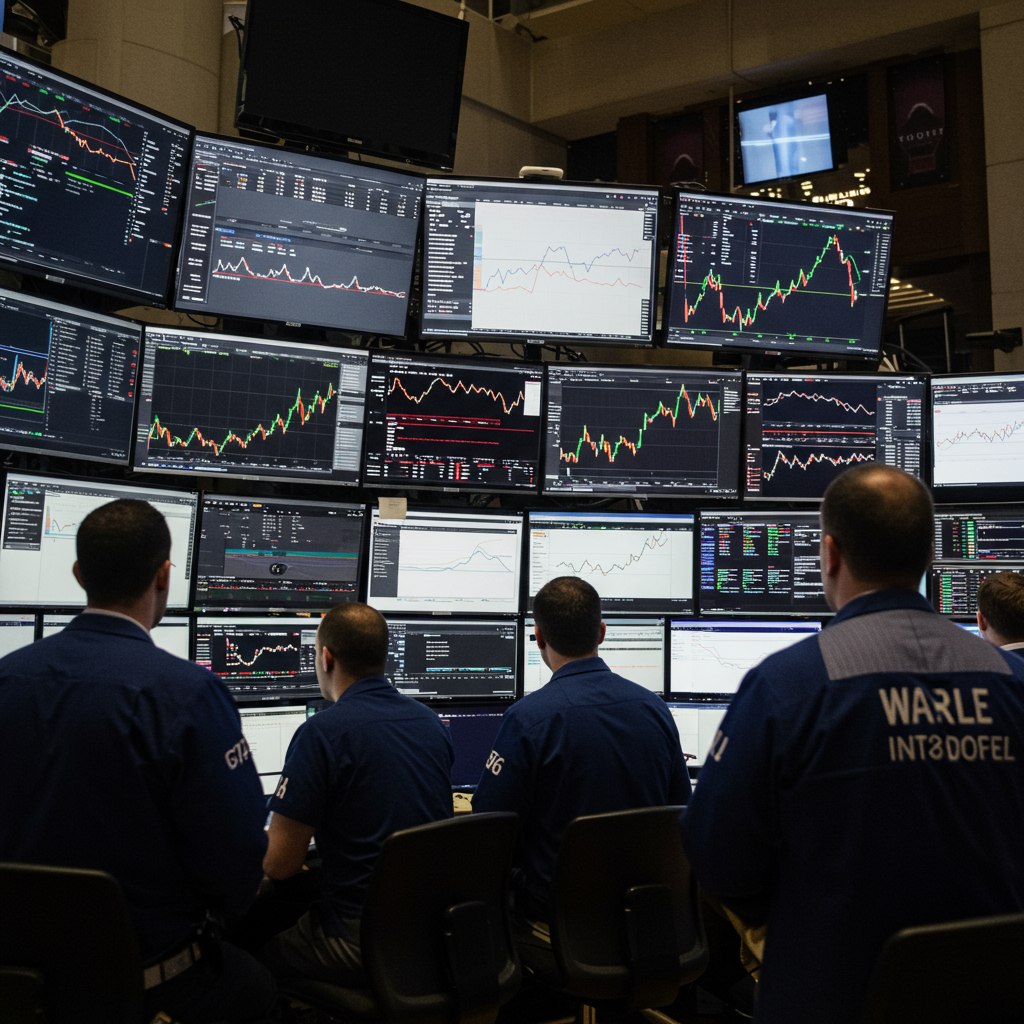The US dollar just experienced a significant jolt in global currency markets, hitting its weakest point against the euro and British pound in three-and-a-half years on Thursday, June 26, 2025. This dramatic decline reflects a broad selloff driven primarily by rapidly shifting expectations about the future path of US interest rates. Traders are now placing significantly higher bets on the Federal Reserve implementing aggressive rate cuts sooner and more frequently than previously anticipated.
This multi-year low marks a notable moment for the US dollar in foreign exchange, or forex, markets. The dollar’s dip against the euro took it to levels not seen since September 2021, while its performance against sterling reached its weakest point since October 2021. This synchronized move against two major global currencies underscores the strength of the underlying factors pressuring the greenback.
Market Bets Accelerate on Federal Reserve Rate Cuts
The primary catalyst behind the dollar’s recent plunge is a profound change in market sentiment regarding the Federal Reserve‘s monetary policy. Following recent signals and economic data, traders are now convinced the US central bank is poised to lower interest rates more aggressively. This expectation is fueled by signs indicating a potential weakening in the US economy, including an unexpected dip in consumer spending during May and a rise in weekly unemployment claims to their highest level since November 2021.
Adding to the market’s conviction was the recent testimony by Fed Chair Jerome Powell to the US Congress. His remarks were widely interpreted as dovish, suggesting a potential shift towards easing monetary policy. While acknowledging expectations for a slight rise in inflation over the summer, Powell stated that if price pressures remain contained, the Fed would reach a point where “we will get to a place where we cut rates sooner than later.”
FX strategists were quick to analyze Powell’s comments. Eric Theoret, a strategist at Scotiabank, noted that the market focus this week had “definitely been about the Fed, the prospect of easing sooner and potentially more rate cuts.” Noel Dixon, a global macro strategist at State Street Global Markets, commented that Powell’s testimony “kind of opened the door to potentially a July cut.” Dixon added that a consumer price inflation report that comes in below market expectations could further increase the likelihood of markets pricing in an earlier rate cut.
FedWatch Tool Shows Soaring Cut Probabilities
Market data confirms the rapid shift in expectations. According to the CME Group’s FedWatch Tool, the probability assigned by futures traders to a July rate cut surged to 23 per cent, a significant jump from just 13 per cent recorded a week prior. The likelihood of a cut by September is even more pronounced, soaring to 93 per cent.
Overall, traders are now forecasting a total of 66 basis points of rate cuts by the end of the year. This suggests the potential for a third 25-basis point reduction, a substantial increase from the 46 basis points anticipated just the previous Friday. Lower US interest rates typically reduce the yield appeal of dollar-denominated assets, eroding the dollar’s advantage compared to currencies in countries with stable or rising rates.
Political Tensions Add Uncertainty
The situation is further complicated by a layer of political uncertainty surrounding the Federal Reserve’s leadership. President Donald Trump has openly criticized Fed Chair Jerome Powell, labeling him “terrible” and “obnoxious” for not cutting interest rates more aggressively. With Powell’s term concluding in May of the following year, speculation is mounting about who Trump might appoint as his successor.
Reports from sources like the Wall Street Journal suggest Trump is considering announcing a replacement as early as September or October. Analysts warn that the prospect of a potentially more dovish nominee could create a “shadow Fed chair,” potentially undermining Powell’s influence on policy decisions, especially if inflation were to unexpectedly rise.
However, Chicago Fed President Austan Goolsbee attempted to temper these concerns, stating on Thursday that any nomination would not impact current monetary policy until the nominee is confirmed. Despite such reassurances, market sentiment appears sensitive to the political dynamics influencing the central bank’s future direction.
Beyond Rate Cuts: Other Factors Weighing on the Dollar
While Fed expectations are the dominant factor, several other elements are contributing to the pressure on the dollar:
Fiscal Situation: The US faces existing budget and current account deficits. These twin deficits are generally seen as negative factors for a currency, potentially requiring foreign capital inflow to finance.
Legislative Outlook: Congress is currently working on a tax and spending bill. While such legislation could potentially boost the dollar if it stimulates economic growth and helps reduce the deficit as a percentage of GDP, the impact remains uncertain until passage and implementation.
Trade Negotiations: The Trump administration faces a self-imposed July 9 deadline for trade negotiations aimed at avoiding reciprocal tariffs. Uncertainty surrounding potential trade disputes, particularly concerning comments about ending trade talks with Canada and threats towards Iran, can dent risk appetite. While initial reactions might sometimes favor the dollar as a safe haven, trade wars have broadly been seen as a drag on the dollar over time, impacting currencies like the Canadian dollar specifically.
Global Investor Reallocation: Longer-term pressure stems from international investors reevaluating their portfolios. Concerns about the outlook for the US economy and currency are leading some to diversify away from US assets. Experts note that years of US asset outperformance have left many global asset managers holding a higher allocation of US dollar-denominated assets than they are comfortable with, suggesting potential for future selling.
Currency Moves Against the Dollar
The dollar’s weakness wasn’t confined to just the euro and sterling. Other currencies also saw significant gains:
The euro climbed by 0.51 per cent against the dollar, trading around $1.1719 and reaching a high of $1.1744, its strongest level since September 2021.
Sterling advanced by 0.62 per cent to around $1.3748, hitting a peak of $1.3770, its highest point since October 2021.
The Swiss franc also reached a 10-and-a-half-year high against the dollar, trading around 0.799.
The dollar fell by 0.72 per cent against the Japanese yen, dropping to around 144.2 yen.
- Against the Canadian dollar, the greenback traded around C$1.37 following trade-related comments.
- www.independent.co.uk
- sg.finance.yahoo.com
- www.watanserb.com
- www.independent.co.uk
- www.channelnewsasia.com
The dollar index, which measures the greenback against a basket of major currencies, was little changed on the day but was on track for its worst weekly performance since mid-May.
Long-Term Outlook and ‘Weaponization’ Concerns
Beyond immediate economic data and policy expectations, analysts are discussing potential long-term challenges for the dollar’s global standing. The concept of “American exceptionalism,” which long underpinned confidence in the dollar, is reportedly being reevaluated by foreign investors.
Furthermore, the freezing of Russian assets and the imposition of sanctions following the 2022 Ukraine invasion have led some analysts to suggest the dollar has been “weaponized” in an unprecedented manner. This action has reportedly prompted other nations to accelerate efforts to reduce their reliance on the US dollar, a factor that analysts believe continues to influence market sentiment and could impact the dollar’s role as the dominant global reserve currency over the long term.
The combination of aggressive rate cut expectations, political uncertainty, specific economic data points, fiscal considerations, trade tensions, and longer-term shifts in global asset allocation creates a complex and challenging environment for the US dollar.
Frequently Asked Questions
Why did the US dollar fall to a multi-year low against the euro and sterling?
The primary reason for the US dollar’s recent plunge is the significant increase in market expectations for the Federal Reserve to cut interest rates sooner and more aggressively. This shift was largely triggered by a dovish interpretation of Fed Chair Jerome Powell’s recent testimony, coupled with signs of a weakening US economy. Traders are now pricing in much higher probabilities of rate cuts starting as early as July or September 2025 and foresee a total of 66 basis points of cuts by year-end, up sharply from prior forecasts.
What key dates or events are currency traders monitoring for the US dollar?
Traders are closely watching upcoming Federal Reserve meetings for confirmation of rate cut timing and pace, particularly in July and September as indicated by futures markets. They are also monitoring US economic data releases, such as inflation reports and employment figures, which could influence the Fed’s decisions. Additionally, political developments surrounding President Trump’s potential naming of a new Fed Chair and the administration’s July 9 deadline for trade negotiations are significant events impacting market sentiment.
Are there long-term risks to the dollar’s value beyond interest rate policy?
Yes, experts point to several longer-term risks. Concerns about the US economic outlook and existing budget/current account deficits weigh on the currency. Global investors are reportedly reallocating assets away from the US. Furthermore, past actions, such as the freezing of Russian assets, have led some to believe the dollar has been “weaponized,” potentially encouraging other countries to reduce their reliance on the greenback over time, which could erode its dominant global status.
The outlook for the US dollar remains volatile, heavily influenced by the delicate balance of future interest rate policy, political actions, and the broader global economic landscape.
Word Count Check: 1141




